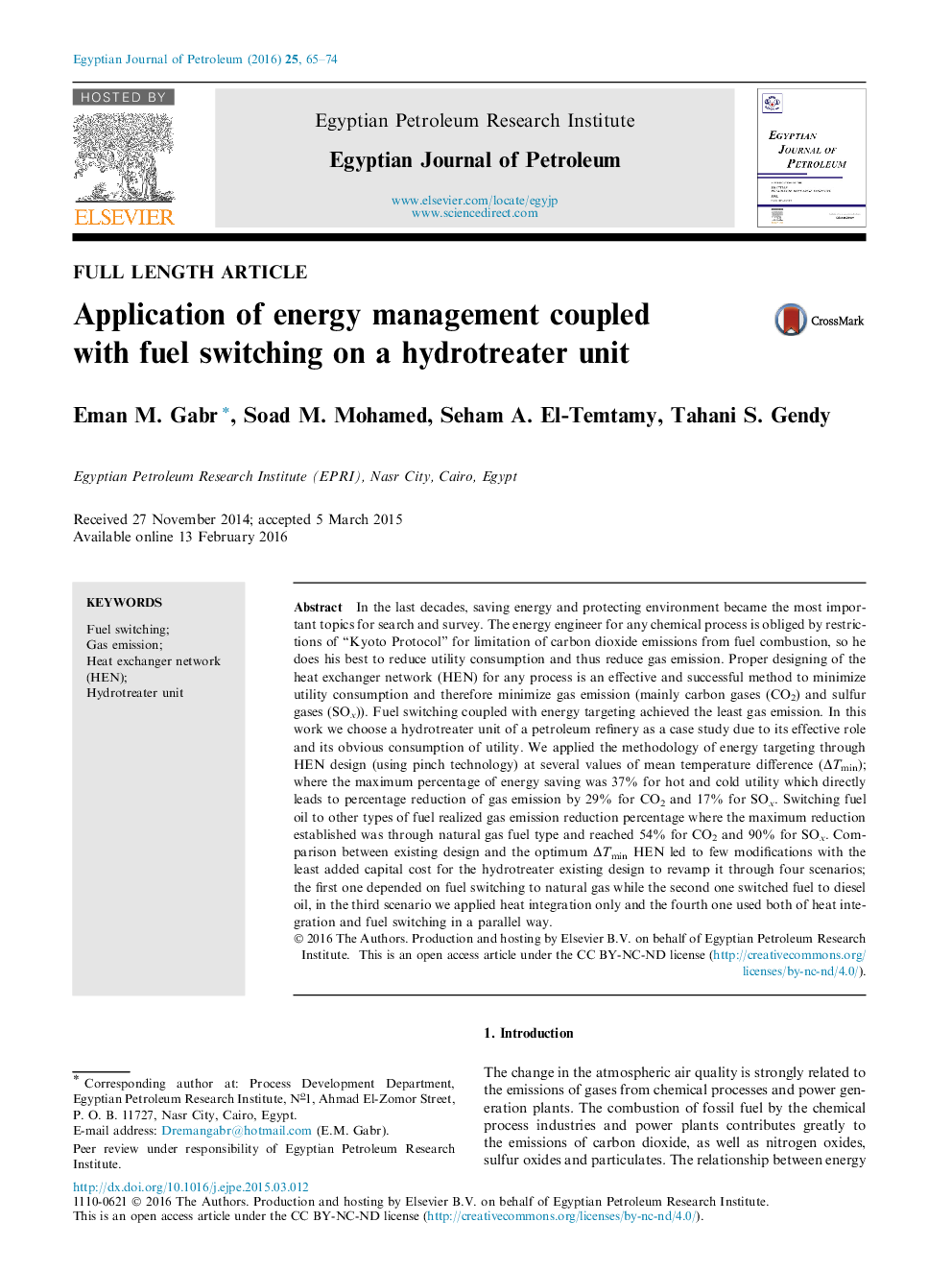| Article ID | Journal | Published Year | Pages | File Type |
|---|---|---|---|---|
| 1756797 | Egyptian Journal of Petroleum | 2016 | 10 Pages |
In the last decades, saving energy and protecting environment became the most important topics for search and survey. The energy engineer for any chemical process is obliged by restrictions of “Kyoto Protocol” for limitation of carbon dioxide emissions from fuel combustion, so he does his best to reduce utility consumption and thus reduce gas emission. Proper designing of the heat exchanger network (HEN) for any process is an effective and successful method to minimize utility consumption and therefore minimize gas emission (mainly carbon gases (CO2) and sulfur gases (SOx)). Fuel switching coupled with energy targeting achieved the least gas emission. In this work we choose a hydrotreater unit of a petroleum refinery as a case study due to its effective role and its obvious consumption of utility. We applied the methodology of energy targeting through HEN design (using pinch technology) at several values of mean temperature difference (ΔTmin); where the maximum percentage of energy saving was 37% for hot and cold utility which directly leads to percentage reduction of gas emission by 29% for CO2 and 17% for SOx. Switching fuel oil to other types of fuel realized gas emission reduction percentage where the maximum reduction established was through natural gas fuel type and reached 54% for CO2 and 90% for SOx. Comparison between existing design and the optimum ΔTmin HEN led to few modifications with the least added capital cost for the hydrotreater existing design to revamp it through four scenarios; the first one depended on fuel switching to natural gas while the second one switched fuel to diesel oil, in the third scenario we applied heat integration only and the fourth one used both of heat integration and fuel switching in a parallel way.
